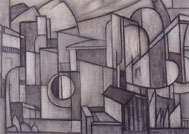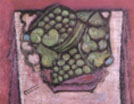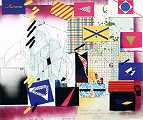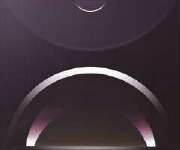In many provinces of
Anatolia, monumental buildings such as ancient churches, mosques
and caravanserais were restored and new museums were opened.
Topkapi Palace, which was turned into a museum together with the
furniture and works of art on the premises, was opened to the
public in 1927. The same year, the Evkaf-i Islamiye Muzesi was
reorganized as the "Museum of Turkish and Islamic Works of
Art" and the Mevlana Dergahi in Konya was also turned into a
museum. The construction of the Ankara Ethnographic Museum was
completed in 1930. New museums were established in Bursa, Adana,
Manisa, Izmir, Kayseri, Antalya, Afyon, Bergama and Edirne. The
Hittite Museum, which was established at the Mahmut Pasha Bedesten
in Ankara in 1940, was restored and renovated and turned into
"The Museum of Anatolian Civilizations", in 1968. In the
following years new museums were established in almost every part
of Turkey. Today, there are 99 museum directorates connected to
the Ministry of Culture, 91 private museums and 1,028 private
collections.
Anatolia has been
settled ever since the Paleolithic age and has been a cradle of
civilizations for many years due to its geographical location,
suitable natural conditions and geopolitical structure. Thus, it
was precisely defined as the "Country of Civilizations".
The collections of museums in Turkey exhibit works of art and
relics belonging to the major civilizations of Anatolia. A great
majority of these works of art were unearthed in the
archaeological excavations which started after 1935. Besides the
archaeological relics from prehistoric times and the Hittite,
Ionian, Lydian, Hellenic, Roman and Byzantine works of art, those
belonging to the Turkish-Islamic period form the second largest
group of artifacts. The museums of Turkey are mainly historical
museums having archaeological and ethnographic collections.
Besides these, numerous buildings associated with important events
in Ottoman history and the War of Independence have been restored
with their original furniture. A house identical to the house in
which Ataturk was born in Salonika was built in Ankara, where
photographs and documents concerning his life and his "firsts"
are on exhibition. The buildings which Ataturk used while he led
the War of Independence, including the building in which the first
Grand National Assembly convened, and where he was hosted in
several provinces, have also been turned into museums.
Another group of
museums in Turkey are "Museum Houses" and "Heritage
Museums". The Cakiraga Mansion in Birgi, Hazeranlar Mansion
in Amasya, the Ziya Gokalp Museum House in Diyarbakir and the
Tevfik Fikret Asiyan House in Istanbul are among these kinds of
museums. The transformation of some historical buildings into
museums started in the 1930s. Dolmabahce Palace, the Kariye,
Fethiye and Imrahor Mosques, Hagia Sophia (St. Sophia) in Istanbul,
the Yesil Turbe (the Green Tomb) and the Muradiye Kulliyesi in
Bursa are the most important examples of these. Meanwhile, the
ruins of many ancient cities and settlements such as Bogazkoy,
Ephesus, Bergama (Pergamum), Aphrodisias, Aspendos, Karatepe,
Goreme and Perge have been organized as "open air museums".
There are also many private and public art museums and museums
associated with the General Directorate of Foundations.
Turkey cooperates with
organizations such as the International Council of Monuments and
Sites (ICOMOS), and the International Council of Museums (ICOM),
associated with UNESCO, in activities regarding historical
heritage and museums. Joint professional studies and projects are
carried out with these institutions. Meanwhile Turkish Museums
have recently won many international prizes: the Sadberk Hanim
Museum was awarded the "European Nostra Prize", the
Istanbul Museum of Turkish and Islamic Works of Art was awarded
the title of "Distinguished Museum" by the Council of
Europe and the Rahmi M. Koc Industrial Museum in Istanbul won the
"Special Museum" prize in 1996.

Sevket
Arman

Dinçer Erimez
Resim Sergisi
art exhibition from
Dincer Erimez
A
B
C
D
E
F
G
H
I
J
K
L
M
N
O
P
Q
R
S
T
U
V
W
X
Y
Z
Non-Alpha
Andy
Warhol Museum Artist,
filmmaker, painter, collector, music producer, commercial
designer and illustrator, author, magazine publisher, fashion
model.
Artcyclopedia.com
Carnegie
Museum of Art
Dallas
Museum of Art Ancient
American, African, Indonesian, and contemporary art, as well as
American decorative arts.
Detroit
Institute of Arts The
fifth-largest fine arts museum in the United States has holdings
of over 60,000 works. Within its more than one hundred galleries
are paintings, sculpture, and graphic and decorative arts.
Fine Arts
Museums of San Francisco Exhibitions:
American Paintings, American Crafts & Sculpture, Art of the
Americas, African Art, Oceanic Art, Textiles/ Ancient Art,
Medieval Art, Renaissance Art, 17th-Century European Art, 18th-Century
European Art, 19th-Century European Art, 20th-Century European
Art, Works on Paper, Ceramics.
Guggenheim
Museum
J
Paul Getty Museum
Montreal
Museum of Fine Arts One
of North America's finest encyclopedic collections, totaling
over 25,000 objects of Canadian Art, Contemporary Art, Inuit and
Amerindian Art, European Masters, Prints and Drawings,
Decorative Arts.
Musée
du Louvre Established
in 1793, the Louvre Museum, in the company of the Ashmolean
Museum (1683), the Dresden Museum (1744) and the Vatican Museum
(1784) is one of the earliest European museums.
Museum
of Contemporary Art Offering
exhibitions of the most thought-provoking art created since 1945
documenting contemporary visual culture through painting,
sculpture, photography, video and film, and performance.

Özdemir Altan
National
Museum of Women in the Arts
The Art
Institute of Chicago African
and American Arts, Architecture, Asian Art, Classical Art,
European Decorative Arts and Sculpture, European Painting,
Photography, Prints, Drawings, Textiles, Throne Rooms, Twentieth-Century
Painting / Sculpture.
The
American Indian Museum
The Art Gallery
of Ontario Art
in the Age of van Gogh: Dutch Paintings from the Rijksmuseum,
Amsterdam, is the first North American survey of 19th-century
Dutch painting since the beginning of this century.
The
Brooklyn Museum of Art One
of the largest art institutions in the US with collections in
Ancient Egyptian art and American Painting & Sculpture.
The
Frick Collection
The_IDE_Virtual_Design_Museum
Famous Designers and
Companies Archives
The
Kimbell Museum
The
Metropolitan Museum of Art
The Museum
of Fine Arts Boston Ongoing
exhibitions include: French Photography: Le Gray to Atget,
Reopening of Egyptian Funerary Arts and Ancient Near East
Galleries, American Traditions: Art of the People, A Monumental
Egyptian Gateway in Boston, Beyond the Screen: Chinese Furniture
of the 16th and 17th Centuries, The Firestone Collection of
French Silver, Face to Face with the Builder of the Great
Pyramid, Galleries for the Art of Africa, Oceania and the
Ancient Americas.
The Museum of
Fine Arts Houston The
oldest comprehensive museum in the Southwest United States.
The
Museum of Modern Art Architecture and Design documents
buildings through models, drawings, and photographs including
the Ludwig Mies van der Rohe Archive. Drawings
Twentieth-century drawings with more than 6,000 works on paper. Film
& Video represents the strongest international film
collection in the United States. Painting &
Sculpture - Largest and most inclusive collection of
modern painting and sculpture. Photography -
25,000 works dating from 1840 to the present constitute one of
the most important collections of photography in the world. Prints
and Illustrated Books -
40,000 historical and
contemporary prints & books reflecting the history of modern
art.
The
National Building Museum
The National
Gallery of Art
The
National Museum of American Art offers
online versions of a number of past and present museum
exhibitions.
The
National Portrait Gallery
The
Philadelphia Museum
The
Prado Museum
The National
Gallery
The
National Gallery of Canada
The
National Gallery of Ireland
The National
Museum of African Art
The
Prado Museum
The Rijks
Museum
The
Salvador Dali' Museum Comprehensive
collection of this great Spanish artist's works.
The San
Francisco Museum of Modern Art
collects, preserves, presents, and interprets the best of
contemporary and modern art for the purpose of enriching
people's lives through aesthetic and learning experiences.
The
Smithsonian
Independent trust
holding more than 140 million artifacts and specimens for "the
increase and diffusion of knowledge" and a center for
research dedicated to public education, national service, and
scholarship in the arts, sciences, and history.
The
Tate Gallery
The
Vatican Museums
The Wyeth
Center at The Farnsworth Museum

Adnan
Çoker
Material
Illusion / Madde İllüzyonu